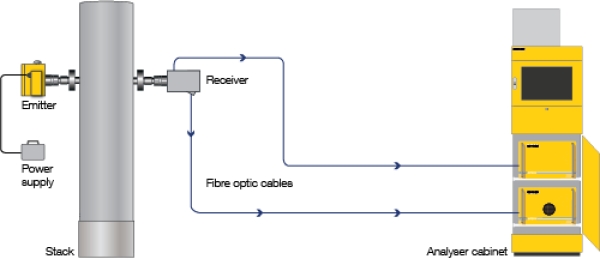- In-Situ UV&IR-DOAS Measuring Systems
- multi-component analysis
- Emission and process measurement
- EN 15267 Certified
- Complies with U.S. EPA requirements
The OPSIS system measures the gas concentration using the DOAS technique (Differential Optical Absorption Spectroscopy). The evaluation is carried out according to Lambert-Beer's law. Each gas absorbs light in known spectral ranges of the total light spectrum in a characteristic way for the respective gas. Thus you have a "non-contact" in-situ measuring instrument, which measures a gas concentration independent of gas type and gas temperature.
Two basic features of the OPSIS system explain its special reliability and performance in the field of emission measurement.
Firstly, the measured value is recorded via a very simple and reliable device - the light path. This is also where the only interaction between the process gases and the OPSIS system takes place. No part of the system is exposed to potentially harmful substances; all problems normally associated with sampling are eliminated.
Secondly, the detection and measurement of the gases is the task of the analyser software, which receives the required spectra from the computer-controlled high-performance spectrometer. This not only allows the simultaneous analysis of several gases with plausibility control and logging of the measured values, but also enables the user to extend the scope of the system at any time without having to change the installed hardware.
Emission gases that can be measured with the OPSIS AR600:
NO, NO2, SO2, NH3, Hg, phenol, formaldehyde, H2O, benzene, toluene, styrene, ClO2, HCl, HF, CO2, and many more.
Emission gases that can be measured with the OPSIS AR650:
CO, H2O, HCl, HF, NH3, N2O, CH4 and CO2 and many more.





